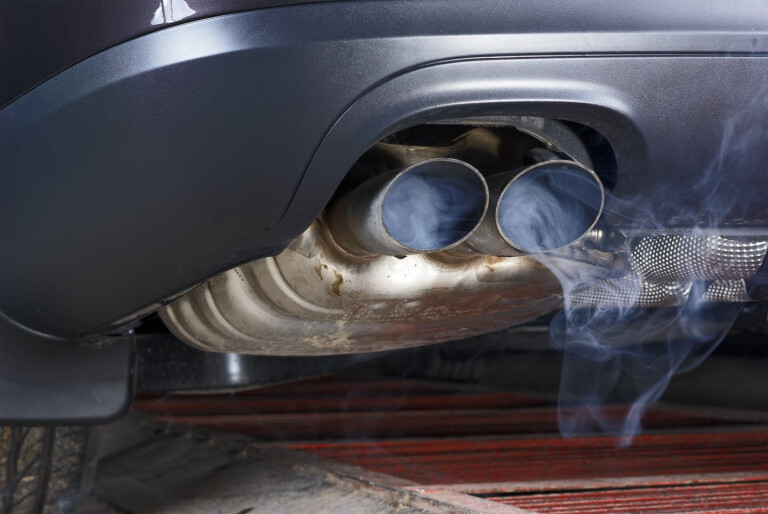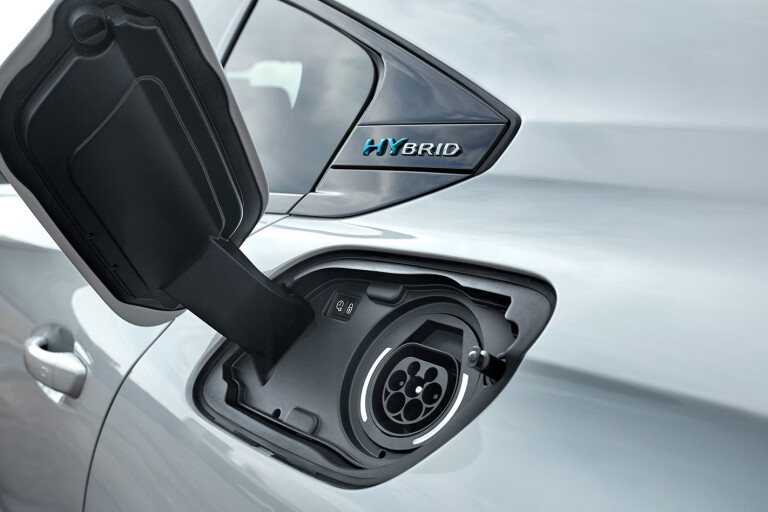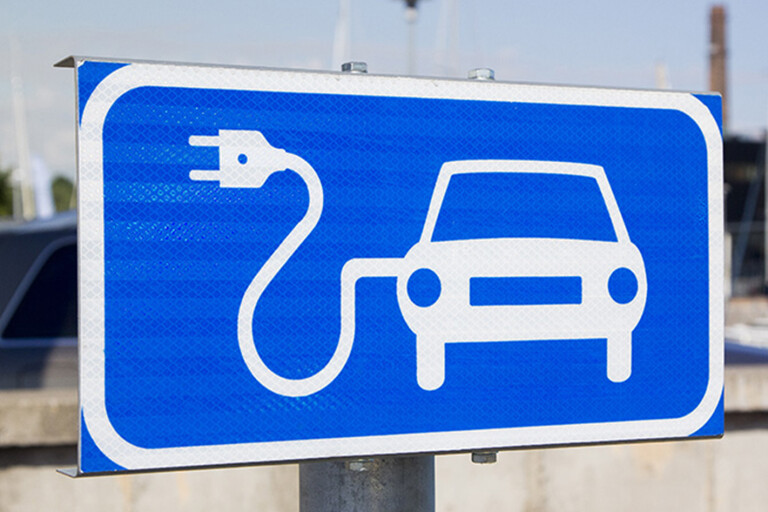
Snapshot
- EV sales almost tripled in 2021
- SUVs and utes accounted for more than half of sales
- Report lays bare Australia's lagging fuel-efficiency progress
Emissions from new cars sold last year fell by just two per cent – even though the number of electric vehicles almost tripled in the same time period.
An annual report out today created by the National Transport Commission (NTC) has found that the paradigm isn't shifting as much as it should be because Aussies are buying SUVs and utes in such high numbers – and typically these segments have fewer EVs to choose from.
In 2021 alone, sales of 4x4 and 4x2 utes increased by more than 43,000, and the number of large SUV shifted went up by around 25,000. The emissions intensity for many of these popular vehicles exceeds 210g/km, with no option yet in Australia to purchase an electric ute.
The transport sector currently accounts for 18 per cent of Australia’s CO2 emissions and the cars we drive are the largest contributor.
.jpg )
The report, which uses data provided by the Federal Chamber of Automotive Industries (FCAI) also revealed that; half of all new car sales were SUVs in 2021 – up from a quarter of all sales a decade ago – while only one in 10 sales was of a small vehicle, down from a quarter.
The document backs the idea that Australia is falling further and further behind other countries when it comes to CO2 emissions – a topic which has been at the forefront of industry discussion (including at last month's inaugural EV Summit) in recent years.
Of all new passenger cars sold in Australia last year, 45 per cent had an emissions intensity of 160 g/km or less, compared with 90 per cent of all new cars sold in Europe.
One particularly interesting observation noted in the report was that if all new cars sold were ‘best in class’ for emissions, Australia’s total CO2 output for lighter passenger vehicles and small SUVs would have reduced by 91 per cent and larger SUVs and utes would be down 47 per cent.

As a result, we've crunched the numbers to show what vehicles were the 'best in class' versus what the top sellers were in 2021.
Interestingly, there is some crossover between the two, showing there is starting to be an appetite for cleaner versions of the cars we like best.
2021 – The cars we bought
| Segment | Model/variant best-selling in 2021 | CO2 in g/km | Sales |
|---|---|---|---|
| Micro (MA) | Kia Picanto | 117 | 6591 |
| Light (MA) | MG3 | 159 | 13,774 |
| Small (MA) | Toyota Corolla | 139 | 28,768 |
| Medium (MA) | Toyota Camry | 169 | 13,081 |
| Large (MA) | Kia Stinger | 236 | 1407 |
| Upper-large (MA) | Mercedes-Benz S-Class | 188 | 263 |
| Sports (MA) | Ford Mustang | 282 | 2827 |
| People-movers (MA) | Kia Carnival | 186 | 5862 |
| SUV light (MA) | Mazda CX-3 | 144 | 12,873 |
| SUV small (MA) | MG ZS | 163 | 18,423 |
| SUV medium (MA) | Toyota RAV4 | 150 | 35,751 |
| SUV large (MA) | Toyota Landcruiser Prado | 211 | 21,299 |
| SUV upper-large (MA) | Toyota Landcruiser wagon | 253 | 15,078 |
| SUV light (MC+NA) | Mazda CX-3 | 144 | 12,873 |
| SUV small (MC+NA) | MG ZS | 163 | 18,423 |
| SUV medium (MC+NA) | Toyota RAV4 | 150 | 35,751 |
| SUV large (MC+NA) | Toyota Landcruiser Prado | 211 | 21,299 |
| SUV upper-large (MC+NA) | Toyota Landcruiser wagon | 253 | 15,078 |
| Ute 4x2 (MC+NA) | Toyota HiLux | 239 | 13,214 |
| Ute 4x4 (MC+NA) | Ford Ranger | 220 | 45,986 |
| Van (MC+NA) | Toyota HiAce Van | 217 | 9726 |
2021 – The cars we should have been buying*
| Segment | Model/variant best in class in 2021 | CO2 in g/km | Sales |
|---|---|---|---|
| Micro (MA) | Mitsubishi Mirage (petrol) | 109 | 2198 |
| Light (MA) | Mini Cooper (electric) Toyota Yaris hybrid (petrol-electric) | 0, 76 | 1866, 4495 (Yaris total) |
| Small (MA) | Nissan Leaf (electric) Hyundai Ioniq (petrol-electric) | 0, 79 | 367, 484 (Ioniq total) |
| Medium (MA) | Peugeot 508 (electric-petrol) Toyota Camry hybrid (petrol-electric) | 40, 96 | 240, 13,081 (Camry total) |
| Large (MA) | Porsche Taycan (electric) BMW 530D (diesel) | 0, 134 | 531, 605 (5 Series total) |
| Upper-large (MA) | Porsche Panamera (electric-petrol) BMW 620D GT (diesel) | 56, 122 | 48, 64 (6 Series total) |
| Sports (MA) | Audi A3 (petrol) | 120 | 223 |
| People-movers (MA) | Volkswagen Caddy (diesel) | 129 | 180 |
| SUV light (MA) | Toyota Yaris Cross hybrid (petrol-electric) | 86 | 7828 (total) |
| SUV small (MA) | MG ZS EV (electric) Kia Niro (petrol-electric) | 0, 88 | 18,423 (ZS total), 742 |
| SUV medium (MA) | Mercedes-Benz EQC 400 4M (electric) Toyota RAV4 hybrid (petrol-electric) | 0, 107 | 5763, 35,751 (RAV4 total) |
| SUV large (MA) | Audi E-Tron (electric) Lexus RX450H (petrol-electric) | 0, 131 | 108, 1879 (RX total) |
| SUV upper-large (MA) | Land Rover Range Rover (electric-petrol) Audi Q8 (diesel) | 64, 181 | 166 RR (total), 349 |
| SUV light (MC+NA) | Suzuki Jimny (petrol) | 146 | 3350 |
| SUV small (MC+NA) | Jeep Compass (diesel) | 150 | 1363 |
| SUV medium (MC+NA) | BMW X3 XDrive30E (electric-petrol) Land Rover Discovery Sport (diesel) | 73, 148 | 4242 (X3 total), 843 |
| SUV large (MC+NA) | Volvo Car XC90 (electric-petrol) Toyota Kluger hybrid (petrol-electric) | 49, 128 | 1323 |
| SUV upper-large (MC+NA) | Audi Q8 (diesel) | 181 | 349 |
| Ute 4x2 (MC+NA) | Nissan Navara (diesel) | 166 | 2069 |
| Ute 4x4 (MC+NA) | Nissan Navara (diesel) | 147 | 13,214 |
| Van (MC+NA) | Renault Kangoo (electric) Volkswagen Caddy Van (diesel) | 0, 129 | 732 (Kangoo total) |
*Eds. note: These are the cars the NTC's report says we should have bought to bring down emissions, not Wheels' own view!

"Australia has some catching up to do with other countries. Today, battery and plug-in hybrid electric vehicles represent just 0.23 per cent of the nation’s 18.4 million cars and light commercial vehicles on our roads," a spokesperson for the NTC said.
"Based on trends observed in other countries, increasing investment in public recharging stations, preferential tax arrangements and other incentives, and the adoption of emissions standards can lead to significant uptake in greener vehicles."

Sandra McKay, executive leader for facilitated reform at the NTC, told Wheels governments – both at state/territory and federal levels – use the data as a benchmark against how their policies are performing.
"They use the report to look at how they are doing, particularly around EV incentives, to see what impact these are having," she said.
"It's also a useful guide on trends, what has changed over the course of 10 years or so. The tripling of battery-electric vehicles and doubling of hybrids (admittedly off a small base) shows we're at a tipping point. You only need look at New Zealand to see how quickly uptake can change. A lot of people think with the right policies, such as an emissions standard, we can see significant change."
Asked if she expects the report to play a key role in the upcoming consultation on a national fuel-efficiency standard, McKay said: "We've shared it with the Federal Government and we assume that it will. Hopefully it does. Policy reform is ripe for discussion."

COMMENTS